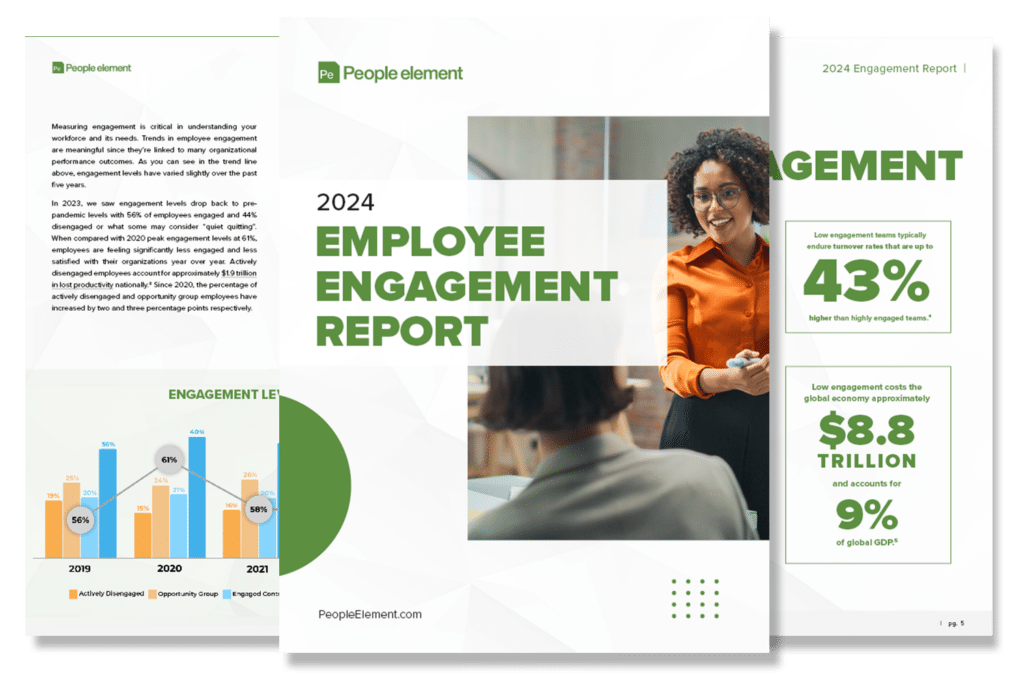Orientation Alone Isn’t Enough
Ever feel like too many of your employees are leaving their job within the first few months of being hired? It’s not your imagination, most organizations see their highest levels of turnover in the first 6 months on the job, and the most within the first 90 days. Much of this early turnover has to do with the company’s onboarding process (or lack thereof).
We frequently hear “we already have an employee onboarding process” when talking with most companies. By digging deeper, we have learned that this statement has different meanings depending on who we are speaking with. Often times, people are using the terms onboarding and orientation interchangeably. They are not the same thing. New hire orientation is an event during the onboarding process. Onboarding is the process used to assimilate new employees into your organization.
What is the Importance of Onboarding?
Research from the Society for Human Resources Management (SHRM) shows that turnover during the first 18 months on the job can be as high as 50 percent. Organizations are realizing they must move beyond the standard new hire orientation and create an effective onboarding process. This is critical to improve employee retention.
An effective onboarding process will help your new hires feel more valued, better understand their role, and increase their productivity and performance, resulting in increased engagement. The onboarding process begins as soon as an offer is accepted and typically lasts through the first year of employment, at a minimum.
Focusing on New Hire Retention
Onboarding is one of the first interactions a new hire has with the company and their peers. The onboarding process quickly determines how new employees will perceive the company both in the short term and long term. During the first few months, employees start to get a sense of their role and what it is like to be a part of the organization. When done correctly, the onboarding process should provide the knowledge and tools to set the individual up for success. It should be a positive and streamlined experience for everyone involved. Not only does onboarding help employees feel welcome, but it also has a hand in increasing KPI’s. Glassdoor notes that a strong onboarding process improves new hire retention by 82% and productivity by 70%. Another study found that 77% of employees who went through a formal onboarding process were able to meet their first performance goals.

The Cost of a Poor Onboarding Experience
If the data suggests that good onboarding leads to positive outcomes, why are so many companies still facing high rates of early turnover? It comes down to the use and effectiveness of their onboarding. According to SHRM, more than one-third of businesses lack a formal onboarding process. Similarly, Gallup found that only 12% of employees felt that their company did a good job with onboarding. When onboarding is neglected, turnover soars. 22% of employees reported they would look for another job if they did not receive good training, and another 41% of people admitted they might look for a job elsewhere if they were unhappy with the company’s onboarding processes.
Managing this early turnover is crucial, especially because losing employees is costly. Our 2022 Engagement Trend Report found that replacing an employee costs two times (2x) their salary, costing between $25,000 to $100,000 depending on their position. On top of the cost of replacing an employee, 45% of HR leaders estimate that over $10,000 a year is wasted on ineffective onboarding procedures. Based on these numbers, it is clear that poor onboarding has a negative impact on both retention and the company’s bottom line. It is imperative to implement a formal onboarding process if you haven’t already and evaluate the effectiveness of that program often.
Elements of an Onboarding Process
At a minimum, your employee onboarding process should include:
Welcoming Your New Hire
To help your new hire feel part of their team, you must make them feel welcome. Find opportunities for your new hire to interact and socialize with both their team and anyone they will be working closely with. Schedule a group lunch for the new hire’s first day for an informal opportunity to get to know each other. Get different departments or managers involved to share information and/or an overview of their function. This will help the new hire better understand how their role fits into the organization.
Mentor Program
Consider assigning a mentor to each new hire. The mentor provides additional support for the new hire and helps them through transition. The overall role of the mentor is proactive, which assists a new hire in understanding the big picture of the processes and the sequencing of events. This will sometimes involve helping with prioritizing on a daily basis. The mentor will be the first point of contact for questions that are not related to a specific training activity.
Feedback
Supervisors should schedule regular one-on-one meetings with their new hires to both give and receive feedback. Regular one-on-one meetings can build trust and a strong relationship between the new hire and supervisor. These meetings are typically more informal and ideally scheduled weekly or bi-weekly.
Many organizations take a more formal approach with 30-, 60- and 90-day new hire check ins in addition to one-one-one meetings. The purpose of the formal new hire checks ins is to receive feedback and learn what your new hire is lacking to be successful. Typically, 30-, 60- and 90-day check ins have a set of consistent questions that is used across the organization with a few unique questions specific to each department or job function. Feedback can then be aggregated and used to measure the effectiveness of the onboarding process.
Career Conversations
It is never too early to begin conversations about career growth. The experts at People Element have found that regardless of the industry, there is a big gap between expectations and reality when it comes to career growth and development, even very early on in an employee’s tenure. She states, “It’s not unusual for us to find strong dissatisfaction with career opportunities from employees with only a few months tenure, often because expectations weren’t set well enough and early enough with new employees. This includes expectations around when/why/how for upward mobility, whether or not there is a clear path for career growth within a certain position, and available developmental opportunities for employees.”

Top Factors New Hires are Looking For
A recent article from LinkedIn outlines some of the top factors new hires are looking for from onboarding:
- 1-on-1 time with direct manager – new employees want time to get to know their manager and build a relationship with them from the start. Schedule plenty of check-ins in the first few months so that employees can start trusting and feeling comfortable with their manager.
- Company culture and values – culture is the core of any workplace so let it shine during onboarding. New hires want to be included in that culture quickly and have a solid knowledge of the company’s history and values.
- Clear expectations and agenda – outlining what is expected from both the new hire and the organization paint a clear picture for everyone. Let them know what the upcoming weeks will look like so they can prepare for success.
- Time to meet the team – joining a new company can feel a bit intimidating. Set time aside for new hires to meet their peers and get familiar with everyone. This will help them feel welcome and get a sense of community from the start.
- Opportunity to share feedback – give new hires a chance to share their thoughts and opinions as much as possible. It lets them know that their voice is heard and appreciated in the workplace.
How Leadership can get Involved in Employee Onboarding
Most employees understand that leadership is often busy. Adding check-ins with new hires to the list of responsibilities might sound daunting, but if you want to create an inclusive culture that shows every employee, especially the new ones, that their ideas and skills are truly valued, it’s a must-do. Making leadership more accessible can be done in a number of ways, from hosting regular new hire meetings (these can even be conducted town hall style as opposed to one-on-ones) to an open-door policy where employees are encouraged to ask questions and learn more about the company’s mission, vision, and values directly from leadership.
But if a larger affair doesn’t make sense for your company, that doesn’t mean you have no other options. Leaders can create simple, personalized emails to send to all new employees that feature a small bio, a photo, and a little bit about how the leader believes the company can benefit from the new employee’s skill set. A warm welcome is sometimes all it takes to leave a positive impression on your new hires when they are in their most impressionable phase of employment.
If you or your leadership want to be more involved with onboarding, consider having leadership run a training session for the area they oversee. A CNO could offer training on nursing policies with new RNs, or the VP of HR can discuss the general company policies with all new employees. These can be for new employees only, but they can also be part of an ongoing professional development plan for the entire organization. However you decide to engage your employees in the beginning days of their employment with your organization, make sure it’s authentic.

What are New Hire Employee Onboarding Surveys?
New hire onboarding surveys are a way to learn more about how your employee is feeling in their new role and provide feedback on your onboarding process. Surveys are a simple and easy way to give your employees a voice and collect candid information. The feedback they share is usually more detailed and honest than if you asked them in a check-in meeting or through email. They can tell you what parts of the onboarding process work well, and which could be improved for future use. Asking your employees for feedback early on also allows you to get insights into their first impressions of the workplace. This gives them an outlet to raise questions or voice any early concerns that can be addressed right away. The main goal of onboarding surveys is to give your new employee a voice from the very beginning and help create a successful onboarding experience.
Tips for Implementing Employee Onboarding Surveys
When implementing an employee onboarding survey, you need to focus on a few key items.
- Ensure the data is actionable – You can do this by asking questions about specific parts of the process so you can pinpoint exactly which areas need improvement.
- Timing is everything – Feedback is timely so deploying surveys at the right time is important for useful data. If you wait too long to collect feedback, you can lose out on valuable insights and delay addressing any early concerns. Automating the process or integrating it into their onboarding checklist can help ensure surveys are always done at the right time.
Pro Tip: We’ve found that it is most effective to deploy at least two check-in surveys during the first 45 days. For a more detailed survey schedule, download our Onboarding Survey Best Practices guide.
- Make sure employees feel comfortable giving feedback – This is necessary for all types of feedback, not just for onboarding surveys. Creating a safe and comfortable environment for your employees to voice their opinion is the goal.
Start Off Right With New Hire Onboarding Surveys
Your company onboarding process plays a larger role in turnover than you may have originally thought. Having an effective onboarding plan that is evaluated frequently will set your employees up for success from the start. Implementing new hire onboarding surveys can help find what employees at your organization really thought about their onboarding and are a simple way to collect feedback. By taking a proactive approach you can get ahead of early turnover, boost productivity, and lower costs.
Contact People Element today to learn how we can help you to improve the effectiveness of your onboarding process by identifying early disengagement triggers and obstacles inhibiting a new hire’s success.





